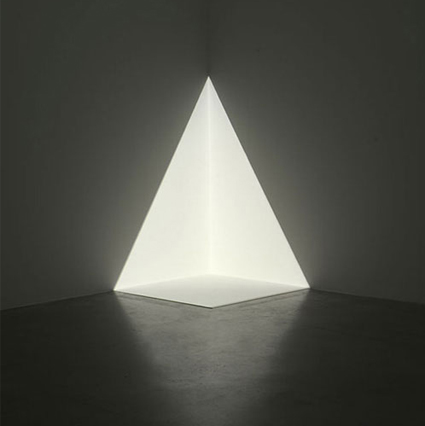James Turrell. By Andrew Graham-Dixon.
“It’s not the job description of any artist in any way to substantiate someone else’s taste. It’s the last thing on our minds. What I want to do is unfold my mapping of a new continent. I hope that people enjoy it but that really doesn’t have anything to do with what I’m up to in my work.”1
James Turrell is an American artist who has spent much of his career working with the medium of light. He does not paint its effects, as many artists before him sought to do, but seeks instead to create or capture specific experiences of light itself. Sometimes he uses artificial lighting, halogen bulbs or projectors, to conjure the effects that he desires. But he also works with ambient natural light, creating spaces and structures that receive, trap or direct the rays of the sun, moon and stars in all kinds of optically intoxicating ways. He uses coloured light from the sky as a painter uses pigment.
He places his audience in unusual situations and confronts them with optical phenomena that are often, initially, bewildering. His work is also calculated to make those who observe its effects peculiarly aware of the very act of observation – and, therefore, of the extent to which the limits of human perception frame all experience. His art takes place before the eyes while also seeking to expose the mechanisms of what goes on behind them.
Turrell has been bracketed with a generation of artists from the West Coast of America, who first came to prominence in the 1960s and who are known, collectively, as the “California Light and Space Movement”. But his work is entirely idiosyncratic and unique. His art is dematerialised and ungraspable. When working in museums or other architectural spaces –...


